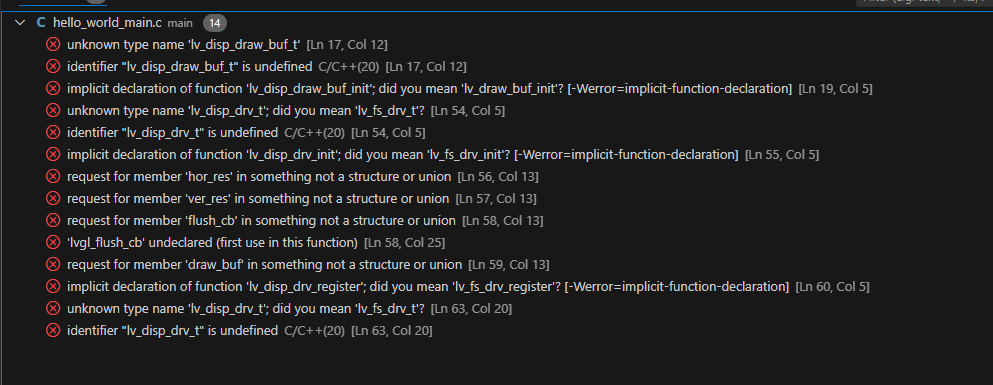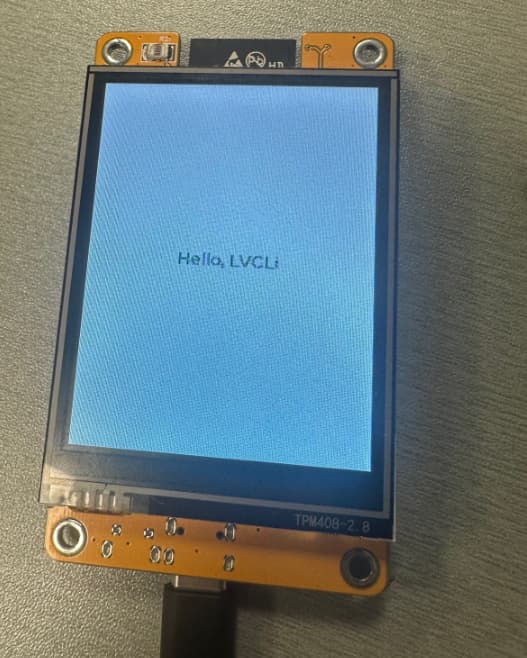I am trying to include LVGL into ESP-IDF v5.3.1.
I keep getting errors related to ‘lv_disp_draw_buf_t’, and im not too sure what to do.
Here is my code if anyone can help me get started with it.
#include "lvgl.h"
#include "esp_lcd_panel_io.h"
#include "esp_lcd_panel_ops.h"
#include "esp_lcd_panel_vendor.h"
#include "driver/spi_master.h"
#define PIN_NUM_MOSI 13
#define PIN_NUM_CLK 14
#define PIN_NUM_CS 15
#define PIN_NUM_DC 2
#define PIN_NUM_RST -1
#define PIN_NUM_BL 21
esp_lcd_panel_handle_t panel_handle = NULL; // Global variable
void lvgl_init_display(void) {
static lv_disp_draw_buf_t draw_buf;
static lv_color_t buf1[240 * 10]; // Buffer for 10 rows
lv_disp_draw_buf_init(&draw_buf, buf1, NULL, 240 * 10);
spi_bus_config_t buscfg = {
.sclk_io_num = PIN_NUM_CLK,
.mosi_io_num = PIN_NUM_MOSI,
.miso_io_num = -1,
.quadwp_io_num = -1,
.quadhd_io_num = -1,
.max_transfer_sz = 240 * 320 * 2 + 8
};
spi_bus_initialize(SPI2_HOST, &buscfg, SPI_DMA_CH_AUTO);
esp_lcd_panel_io_handle_t io_handle = NULL;
esp_lcd_panel_io_spi_config_t io_config = {
.dc_gpio_num = PIN_NUM_DC,
.cs_gpio_num = PIN_NUM_CS,
.pclk_hz = 20 * 1000 * 1000,
.spi_mode = 0,
.trans_queue_depth = 10,
.lcd_cmd_bits = 8,
.lcd_param_bits = 8
};
esp_lcd_new_panel_io_spi(SPI2_HOST, &io_config, &io_handle);
esp_lcd_panel_dev_config_t panel_config = {
.reset_gpio_num = PIN_NUM_RST,
.color_space = ESP_LCD_COLOR_SPACE_RGB,
.bits_per_pixel = 16
};
esp_lcd_new_panel_st7789(io_handle, &panel_config, &panel_handle);
esp_lcd_panel_reset(panel_handle);
esp_lcd_panel_init(panel_handle);
esp_lcd_panel_disp_on_off(panel_handle, true);
lv_disp_drv_t disp_drv;
lv_disp_drv_init(&disp_drv);
disp_drv.hor_res = 240;
disp_drv.ver_res = 320;
disp_drv.flush_cb = lvgl_flush_cb;
disp_drv.draw_buf = &draw_buf;
lv_disp_drv_register(&disp_drv);
}
void lvgl_flush_cb(lv_disp_drv_t *disp_drv, const lv_area_t *area, lv_color_t *color_p) {
esp_lcd_panel_draw_bitmap(panel_handle, area->x1, area->y1, area->x2 + 1, area->y2 + 1, color_p);
lv_disp_flush_ready(disp_drv);
}
void app_main(void) {
lv_init();
lvgl_init_display();
lv_obj_t *label = lv_label_create(lv_scr_act());
lv_label_set_text(label, "Hello, LVGL!");
lv_obj_align(label, LV_ALIGN_CENTER, 0, 0);
while (1) {
lv_timer_handler();
vTaskDelay(pdMS_TO_TICKS(10));
}
}
Screenshot of errors

